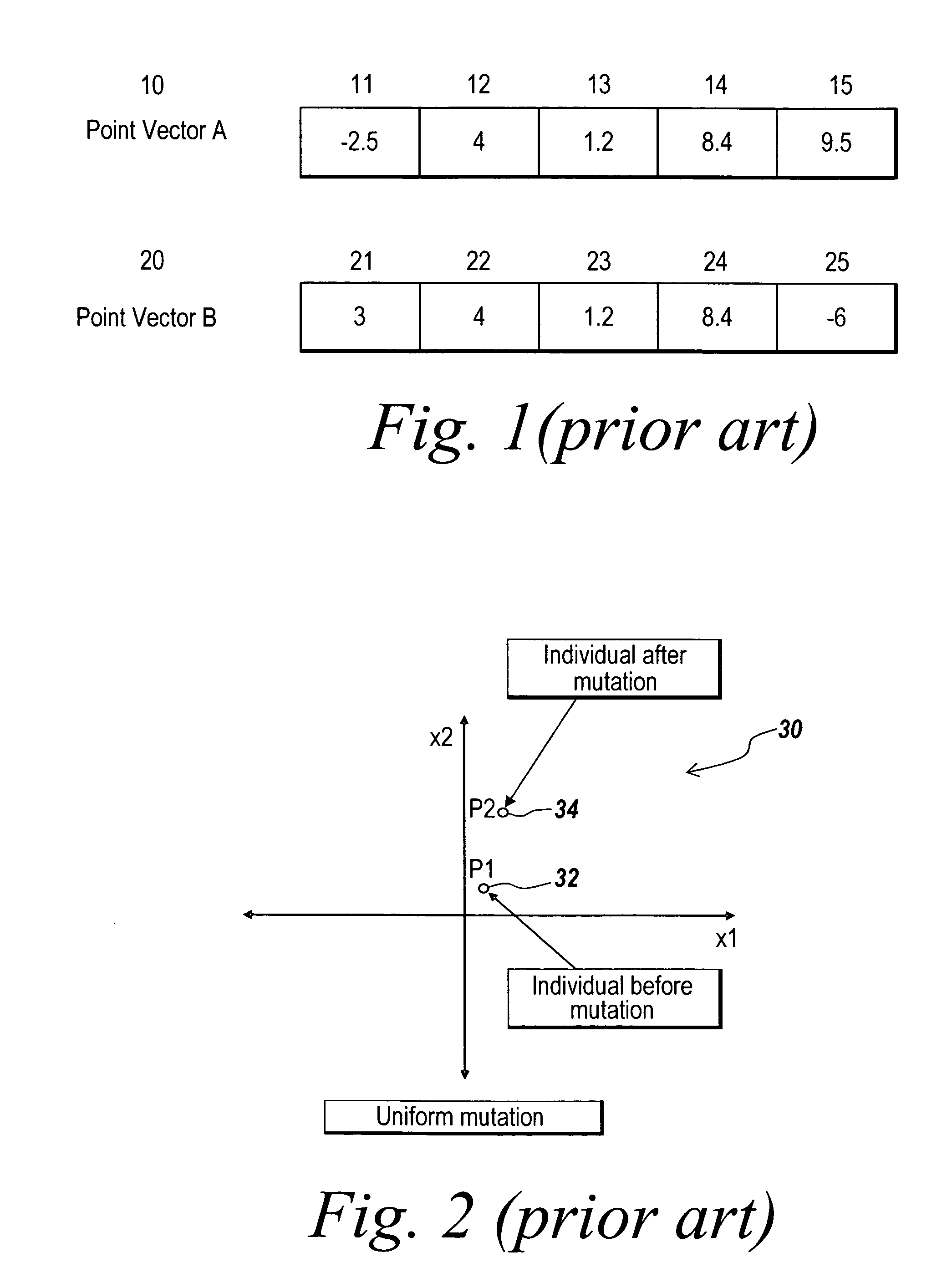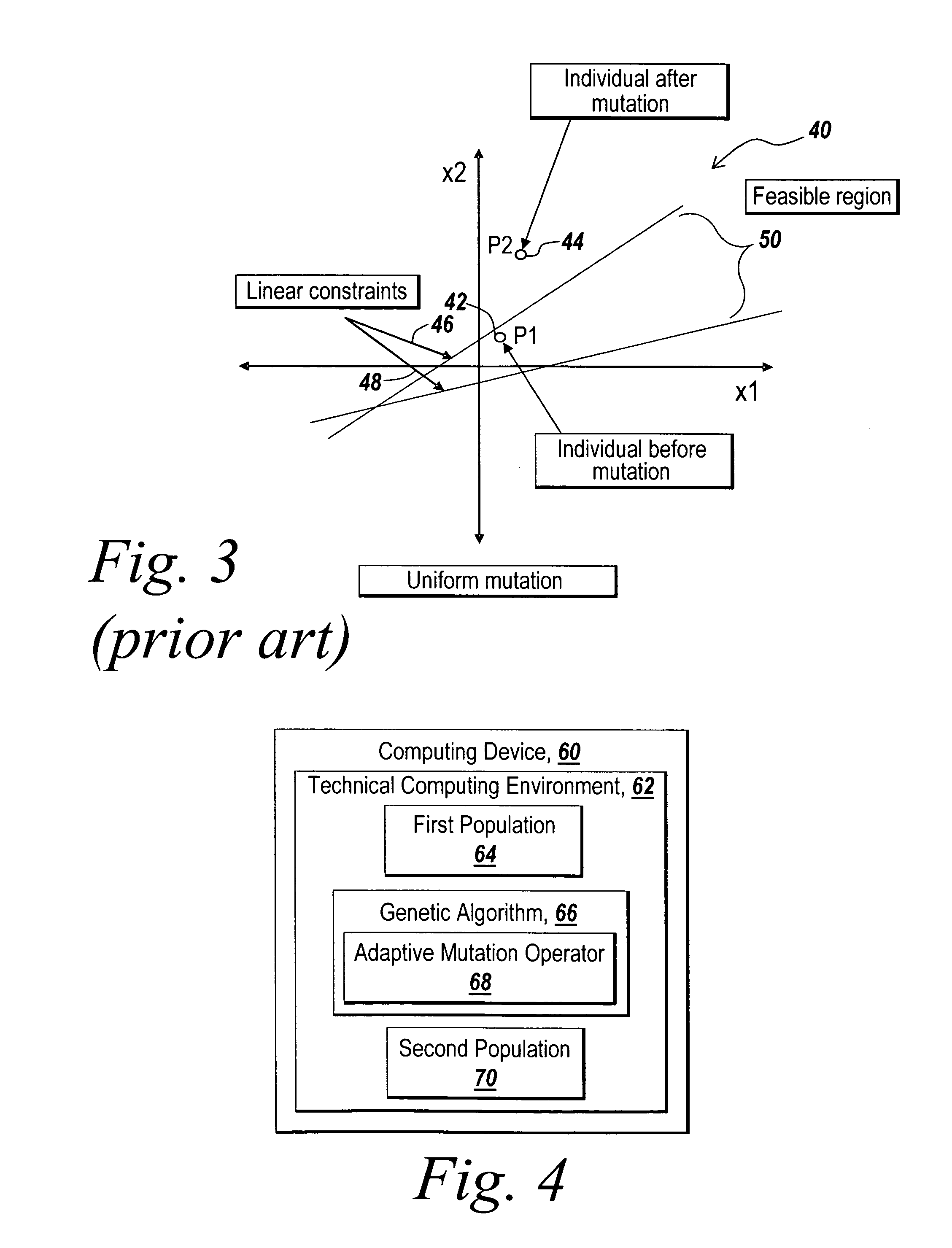System and method for performing non-linear constrained optimization with a genetic algorithm
a genetic algorithm and optimization system technology, applied in the field of genetic algorithms, can solve the problems of difficult to perform a mutation step in a constrained optimization, conventional algorithms suffer from a number of drawbacks, and problems such as constrained optimization problems
- Summary
- Abstract
- Description
- Claims
- Application Information
AI Technical Summary
Benefits of technology
Problems solved by technology
Method used
Image
Examples
Embodiment Construction
[0027]The illustrative embodiment of the present invention uses an augmented Lagrangian genetic algorithm to perform constrained optimization for optimization problems that include linear, bound, and non-linear constraints. The illustrative embodiment separates the non-linear constraints from the linear and bound constraints and handles each separately. The present invention also utilizes information from the linear and bound constraints and formulates a sub-problem with appropriate penalty terms (using a log barrier) and estimated Lagrange parameters that includes the non-linear constraints and excludes the linear and bound constraints. The illustrative embodiment also includes update formulae which guides the algorithm towards a minimum.
[0028]FIG. 4 depicts an environment suitable for practicing the illustrative embodiment of the present invention. A computing device 60 hosts a technical computing environment 62. The computing device 60 may be a PC, workstation, server, laptop, ma...
PUM
 Login to View More
Login to View More Abstract
Description
Claims
Application Information
 Login to View More
Login to View More - R&D
- Intellectual Property
- Life Sciences
- Materials
- Tech Scout
- Unparalleled Data Quality
- Higher Quality Content
- 60% Fewer Hallucinations
Browse by: Latest US Patents, China's latest patents, Technical Efficacy Thesaurus, Application Domain, Technology Topic, Popular Technical Reports.
© 2025 PatSnap. All rights reserved.Legal|Privacy policy|Modern Slavery Act Transparency Statement|Sitemap|About US| Contact US: help@patsnap.com



